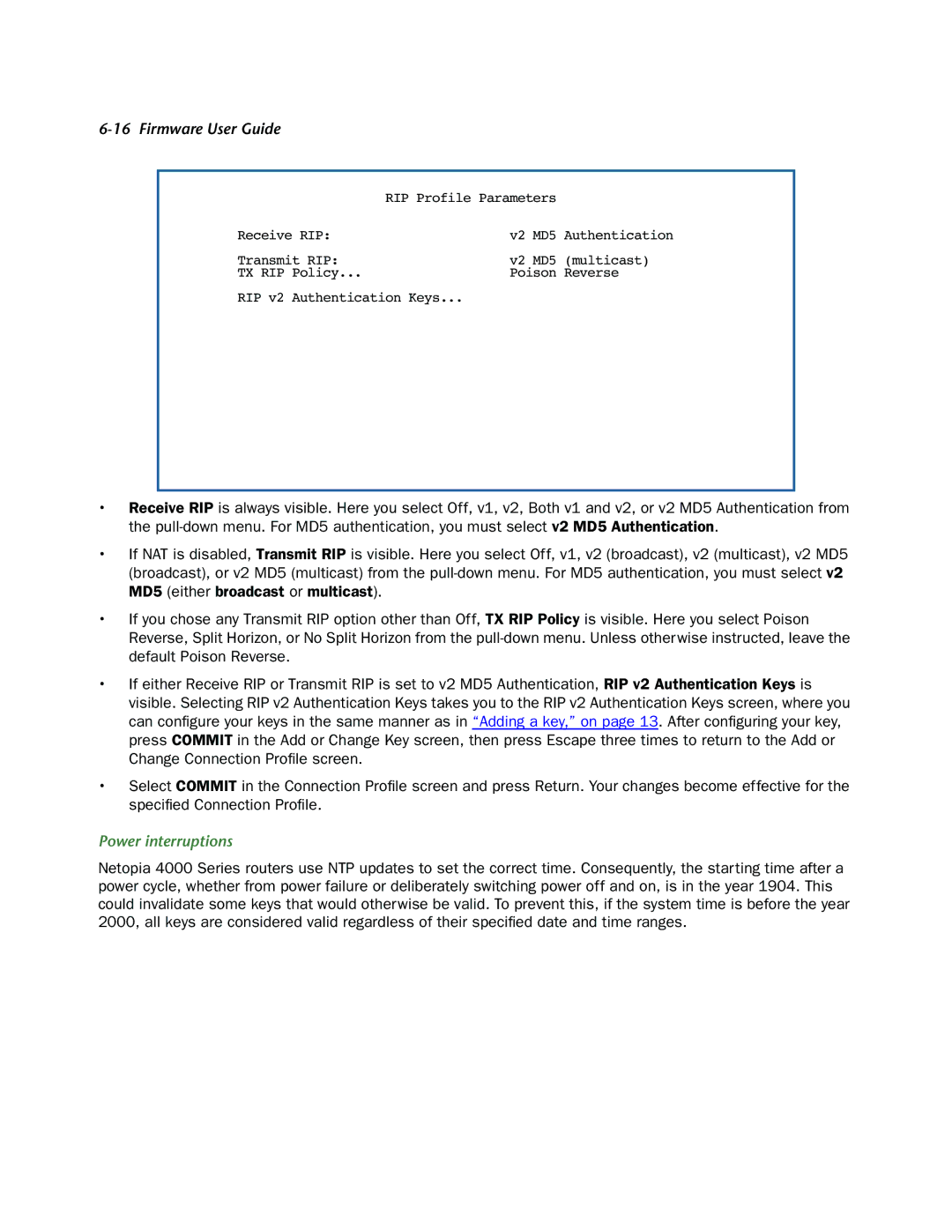
6-16 Firmware User Guide
| RIP Profile Parameters | |
Receive RIP: | v2 | MD5 Authentication |
Transmit RIP: | v2 | MD5 (multicast) |
TX RIP Policy... | Poison Reverse | |
RIP v2 Authentication Keys...
•Receive RIP is always visible. Here you select Off, v1, v2, Both v1 and v2, or v2 MD5 Authentication from the
•If NAT is disabled, Transmit RIP is visible. Here you select Off, v1, v2 (broadcast), v2 (multicast), v2 MD5 (broadcast), or v2 MD5 (multicast) from the
•If you chose any Transmit RIP option other than Off, TX RIP Policy is visible. Here you select Poison Reverse, Split Horizon, or No Split Horizon from the
•If either Receive RIP or Transmit RIP is set to v2 MD5 Authentication, RIP v2 Authentication Keys is visible. Selecting RIP v2 Authentication Keys takes you to the RIP v2 Authentication Keys screen, where you can configure your keys in the same manner as in “Adding a key,” on page 13. After configuring your key, press COMMIT in the Add or Change Key screen, then press Escape three times to return to the Add or Change Connection Profile screen.
•Select COMMIT in the Connection Profile screen and press Return. Your changes become effective for the specified Connection Profile.
Power interruptions
Netopia 4000 Series routers use NTP updates to set the correct time. Consequently, the starting time after a power cycle, whether from power failure or deliberately switching power off and on, is in the year 1904. This could invalidate some keys that would otherwise be valid. To prevent this, if the system time is before the year 2000, all keys are considered valid regardless of their specified date and time ranges.
